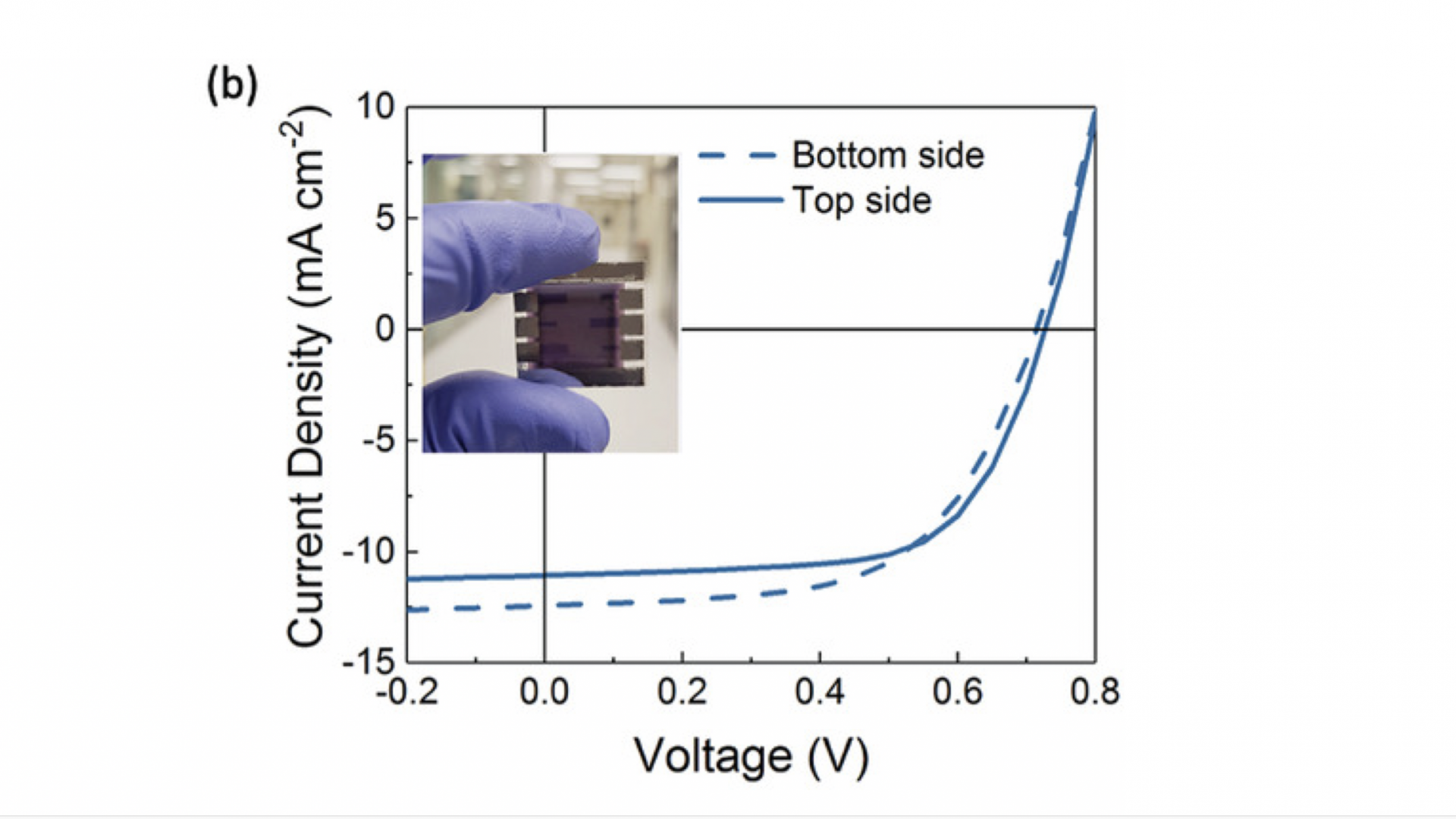Eloïse Bihar, et al., "Fully Inkjet‐Printed, Ultrathin and Conformable Organic Photovoltaics as Power Source Based on Cross‐Linked PEDOT:PSS Electrodes" Advance Material Technology 2000226, 2020, 1.
Ultra‐lightweight solar cells have attracted enormous attention due to their ultra‐conformability, flexibility, and compatibility with applications including electronic skin or miniaturized electronics for biological applications. With the latest advancements in printing technologies, printing ultrathin electronics is becoming now a reality. This work offers an easy path to fabricate indium tin oxide (ITO)‐free ultra‐lightweight organic solar cells through inkjet‐printing while preserving high efficiencies. A method consisting of the modification of a poly(3,4‐ethylenedioxythiophene) polystyrene sulfonate (PEDOT:PSS) ink with a methoxysilane‐based cross‐linker (3‐glycidyloxypropyl)trimethoxysilane (GOPS)) is presented to chemically modify the structure of the electrode layer. Combined with plasma and solvent post‐treatments, this approach prevents shunts and ensures precise patterning of solar cells. By using poly(3‐hexylthiophene) along rhodanine‐benzothiadiazole‐coupled indacenodithiophene (P3HT:O‐IDTBR), the power conversion efficiency (PCE) of the fully printed solar cells is boosted up to 4.73% and fill factors approaching 65%. All inkjet‐printed ultrathin solar cells on a 1.7 µm thick biocompatible parylene substrate are fabricated with PCE reaching up to 3.6% and high power‐per‐weight values of 6.3 W g−1. After encapsulation, the cells retain their performance after being exposed for 6 h to aqueous environments such as water, seawater, or phosphate buffered saline, paving the way for their integration in more complex circuits for biological systems.
